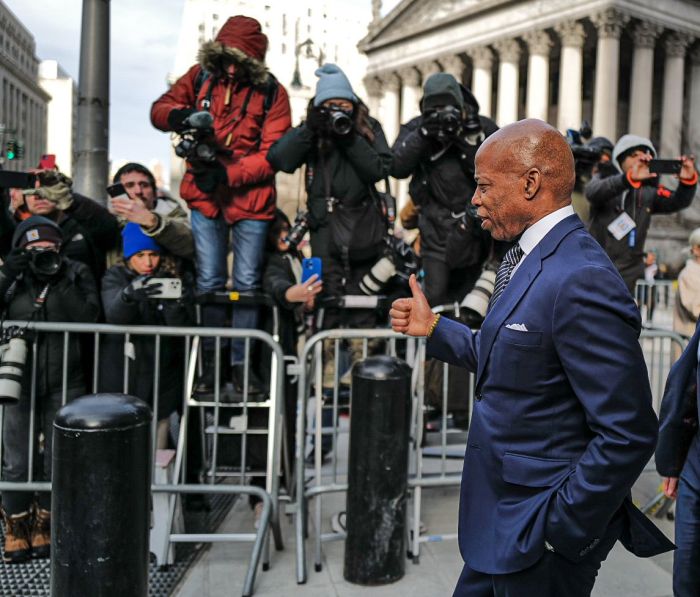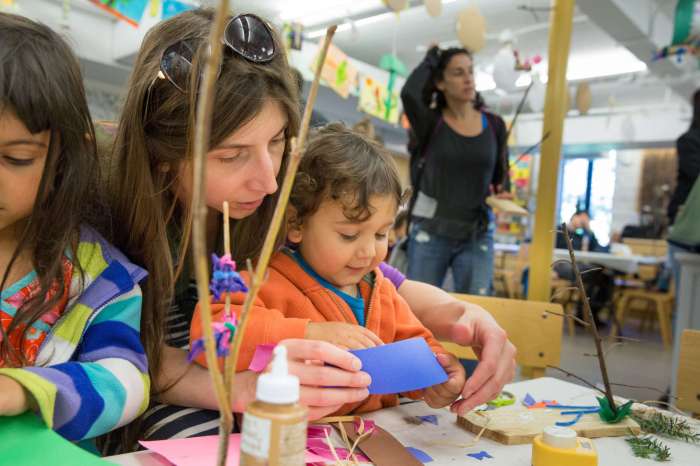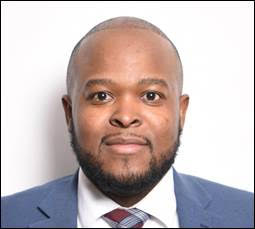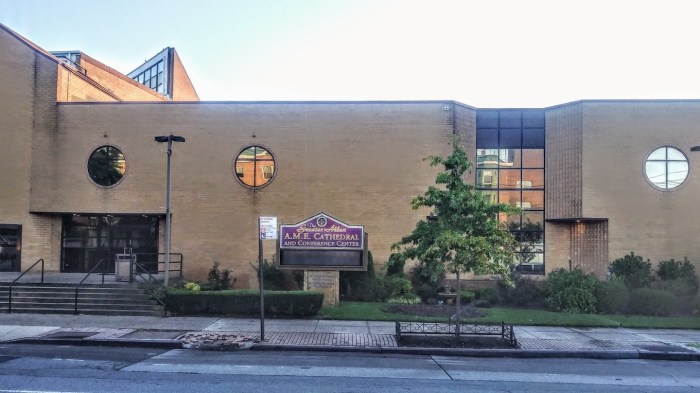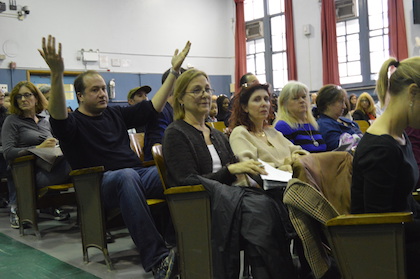
BY JOSH ROGERS | The city last month rejected any chance to reduce the long waiting lists at P.S. 199 next September, but hasn’t given up on helping three-year-olds on the Upper West Side who will be applying to kindergarten in 2017.
The District 3 Community Education Council, which had been debating rezoning ideas for months, had asked for a new plan that would reduce at least some of the large waiting lists at the West 70th Street school in the coming school year, but on November 18, the day before the Department of Education was scheduled to present a new proposal, the department announced it would not propose any change.
Attendance was sparse at the November19 CEC meeting since word had already spread that there’d be nothing much to discuss, but a few of the P.S. 199 parents who did attend were angry that the overcrowded school was not going to get relief.
Eric Shuffler expressed outrage that the Education Department was effectively saying “we’re not going to get what we want, so we’re not going to try anything… There is no other way as a parent we can walk out of this process thinking anything but the mayor and DOE does not care, and if you’re a high-performing school in New York City, you are not part of the DOE and the mayor’s agenda.”
Earlier in the evening, the DOE’s Sarah Turchin said that officials hoped to set up meetings with incoming parents zoned for P.S. 199 to stress the importance of listing more than one school on their applications, but she appeared to nod in agreement when PTA member Wendy Hutter said, “What’s more disappointing is that you have initiatives coming up in a couple of weeks, and there’s no communications plan, no strategic outreach…. We can keep talking but nothing is getting done, and we’re kind of like where’s the accountability in the system from the DOE?”
This week, a DOE spokesperson did not say whether any specific meetings or communication plans were in place for parents likely to begin applying to PS 199 next week.
Turchin acknowledged it will not be easy getting the message out, but said officials would be working with local politicians.
“It’s obviously a little more tough because you don’t have those families in the system yet,” she said of parents just now having their first child ready for kindergarten.
Last year about 100 families were initially placed on the P.S. 199 waiting list, and many of them did not list a second choice on their applications, which meant they did not get offers to enroll anywhere until the summer, adding to the angst.
The hope is that families rejected at P.S. 199 will list other choices so they will get an acceptance letter somewhere in March while remaining on the P.S. 199 waiting list. Siblings of existing students have the first priority, and then zoned students are selected at random for the remaining slots. The system’s computer program makes an offer to a family’s highest ranked choice where there is space.
The DOE originally proposed eliminating the waiting list by shifting some of the P.S. 199 zone to P.S. 191 to the south and P.S. 452 to the north. P.S. 191 is considered by just about all observers to be a struggling but improving school, and the CEC balked at adding to its zone. The state has designated it as “persistently dangerous,” and although there is consensus that the label is not based on reality, it does complicate this year’s kindergarten applications.
The CEC, a parents group elected by school PTA leaders, had expected to see a new plan with just a larger P.S. 452 zone, but Turchin said, “This would not have had a significant dent on the 199 waitlist.”
The city estimated the original 452 change would have reduced the waiting list by about 25 students, enough to accommodate one kindergarten class, but CEC members had suggested the number was an underestimate and asked for fewer blocks to be added to the zone, which potentially could have been the reduction DOE was striving for.
Turchin said since there was not consensus on how much to increase the zone and there could be a need for a larger rezoning within a few years, it was better to do nothing.
“We wanted to make sure that we were not derailing the longer term conversations that had to happen,” she said.
CEC member Noah Gotbaum pointed out that it was only after the DOE decided not to make a change that he and his colleagues got some of the additional data they requested.
“I think for the first time an hour and a half ago we got a little bit of what we have been asking for for months and… it doesn’t compare to what [the DOE] has sent us in the past,” he said.
“Not all of us sitting here were just ready to vote this thing down,” said Nan Eileen Mead, the CEC’s first vice president. “I would have voted for whatever rezoned 452 would have been put to us.”
Joe Fiordaliso, the CEC’s president, said he didn’t know for certain but thought there were enough votes to reduce this year’s waiting list, and he wanted a chance to see.
Turchin also said the DOE was rejecting three of the CEC’s other requests. Two would have reduced the overcrowding — by not including three new residential buildings in the PS 199 zone and by suspending the “right of return,” which allows students rejected for kindergarten to enroll there in later grades. The third CEC request, admitting five instead of six kindergarten classes, would have increased the waiting list. CEC members said there is a need to reduce the number of students, particularly in light of a recent fire drill where older students were forced to linger inside before they exited.
Turchin pledged to talk with leaders and parents at both P.S. 191 and 199 to see what steps can be taken to prepare for next September.
Fiordaliso said CEC has worked on outreach to parents of prospective kindergarteners, but acknowledged that some parents are going to be surprised that nothing has been done to improve the waiting listing problem.
“They’re going to walk in and realize, ‘Holy crap there’s a huge waitlist and I didn’t realize up until now,’” he said.



